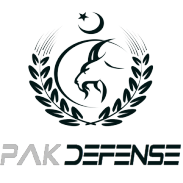Though fiscal constraints made it more difficult for the Pakistan Air Force (PAF) to add new combat aircraft and support systems to its fleet, equipment is but only one part to a successful large-scale air operation, such as Swift Retort. The other component is the availability of trained aircrew, effective planning, and a flawless execution. To sustain more frequent – and simultaneous – large-scale air operations, the PAF will need to raise its personnel quality, planning and execution experience fleet-wide.
Ultimately, such changes boil down to training and experience. These attributes are not as tangible to the eye as a new combat aircraft, but they are essential to maintaining an acceptable margin of success – and in mitigating loss and failure – of such operations. In contrast to the procurement of new equipment, the PAF has had success in acclimating its personnel to the changes of air warfare through training and multi-national and fleet-wide exercises, such as Anatolian Eagle and High Mark, respectively.
The PAF is taking steps to acclimate its personnel across three key areas: its growing fleet of modern multi-role combat aircraft, network-enabled warfare, and complex, large-scale air operations.
Preparing New Pilots for Multirole Platforms:
The cockpit environment of the PAF’s mainstay fighters have changed, glass cockpits with multi-function displays (MFD) are common within the fleet. In time, such fighters will form the majority of the PAF fleet, thus requiring new pilots to have familiarity with those environments before converting to those aircraft.
The PAF was moving towards upgrading its K-8 Karakoram trainers with glass cockpits since at least 2010. Designated K-8P, it seems Pakistan Aeronautical Complex (PAC) was carrying out the integration work of existing PAF K-8s as recently as 2017-2018.[1] However, the K-8 is an intermediary-to-advanced step in the PAF’s training curriculum, so the PAF opted to advance its training at earlier levels as well.
The starting point for basic flight training is the Super Mushshak. The latest Ministry of Defence Production (MoDP) yearbook lists a “glass cockpit modification” project for 20 aircraft split between the PAF and the Pakistan Army.[2] The MoDP says PAC carried out the cockpit modification work using Dynon’s SkyView avionics system. However, in March 2020, Genesys Aerosystems announced that a Super Mushshak flew with its glass cockpit environment.[3] It is unclear if PAC is offering the Genesys package for overseas Super Mushshak users, or if the PAF is revising its upgrade plans away from the Dynon SkyView (or use both)…
https://quwa.org/2020/04/26/pakistan-is-adapting-its-training-for-emerging-air-warfare-trends/
PAKISTAN IS ADAPTING ITS TRAINING FOR EMERGING AIR WARFARE TRENDS
This category is dedicated to the latest discussion about the fearless Falcons of PAKISTAN AIR FORCE...
Return to “PAKISTAN AIR FORCE”
Jump to
- General Forums
- ↳ Introduction (All the Newbies Start from here)
- PAKISTAN DEFENSE FORCES FORUM
- ↳ PAKISTAN ARMY
- ↳ PAKISTAN NAVY
- ↳ PAKISTAN AIR FORCE
- PAKISTAN INTELLIGENCE AGENCIES
- ↳ ISI
- ↳ PAKISTAN MILITARY INTELLIGENCE (MI)
- ↳ PAKISTAN NAVAL INTELLIGENCE (NI)
- ↳ PAKISTAN AIR INTELLIGENCE (AI)
- PAKISTAN SPECIAL FORCES SECTION
- ↳ SPECIAL SERVICES GROUP (SSG)
- ↳ PAKISTAN NAVAL SPECIAL SERVICES GROUP / PAKISTAN NAVY
- ↳ PAKISTAN SPECIAL SERVICES WING (SSW)
- ↳ FRONTIER CORP SPECIAL FORCES
- ↳ PAKISTAN RANGERS SPECIAL FORCES
- PAKISTAN MISSILE DEVELOPMENT PROGRAM
- ↳ PAKISTAN BALLISTIC MISSILE PROGRAM
- ↳ PAKISTAN CRUISE MISSILE PROGRAM
- ↳ PAKISTAN TACTICAL NUCLEAR WEAPONS (TNWs)
- ↳ PAKISTAN • MULTIPLE INDEPENDENTLY TARGETABLE REENTRY VEHICLE (MIRV)
- PAKISTAN DEVELOPMENT PROGRAM
- ↳ CHINA PAKISTAN ECONOMIC CORRIDOR (CPEC)
- ↳ SCIENCE AND TECHNOLOGY
- ↳ ECONOMY OF PAKISTAN
- ↳ EDUCATION
- ↳ SPORTS
- MIR JAFAR AND MIR SADIQ OF PAKISTAN
- ↳ NANG-E-DEEN, NANG-E-MILLAT, NANG-E-WATAN
- LATEST HAPPENINGS AROUND THE WORLD
- ↳ PAKISTAN
- ↳ CHINA
- ↳ Russia
- ↳ AFGHANISTAN
- ↳ EUROPE
- ↳ MIDDLE EAST
- ↳ ASIA
- ↳ AFRICA
- ↳ AMERICA
- ↳ india
- LATEST SCIENCE, TECHNOLOGY AND ECONOMY NEWS OF THE WORLD
- ↳ LATEST NEWS RELATED TO SCIENCE AND TECHNOLOGY
- ↳ LATEST ECONOMY NEWS AND UPDATES
- WORLD WARFARE FORUMS
- ↳ WORLD LAND FORCES FORUM
- ↳ WORLD AIR WARFARE FORUM
- ↳ WORLD NAVAL WARFARE FORUM
- ↳ WORLD SPACE WARFARE FORUM
- ↳ MILITARY HARDWARE, TOOLS AND GEAR
- WORLD MILITARY ALLIANCES
- ↳ ISLAMIC MILITARY COUNTER TERRORISM COALITION (ICMCTC)
- ↳ NORTH ATLANTIC TREATY ORGANIZATION (NATO)
- BOARD OF MANAGENEMT
- ↳ LATEST ANNOUNCEMENTS
- ↳ SUGGESTIONS
- ↳ HAVE YOUR SAY
- SHOUTBOX
- ↳ SHOUTBOX

